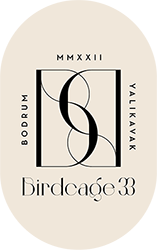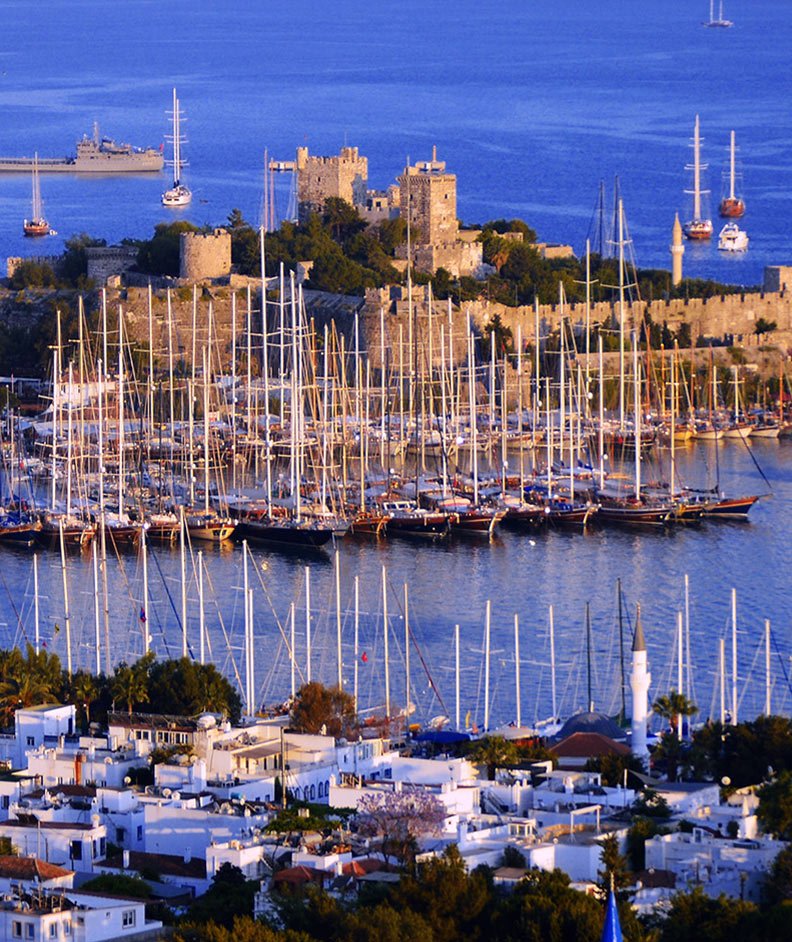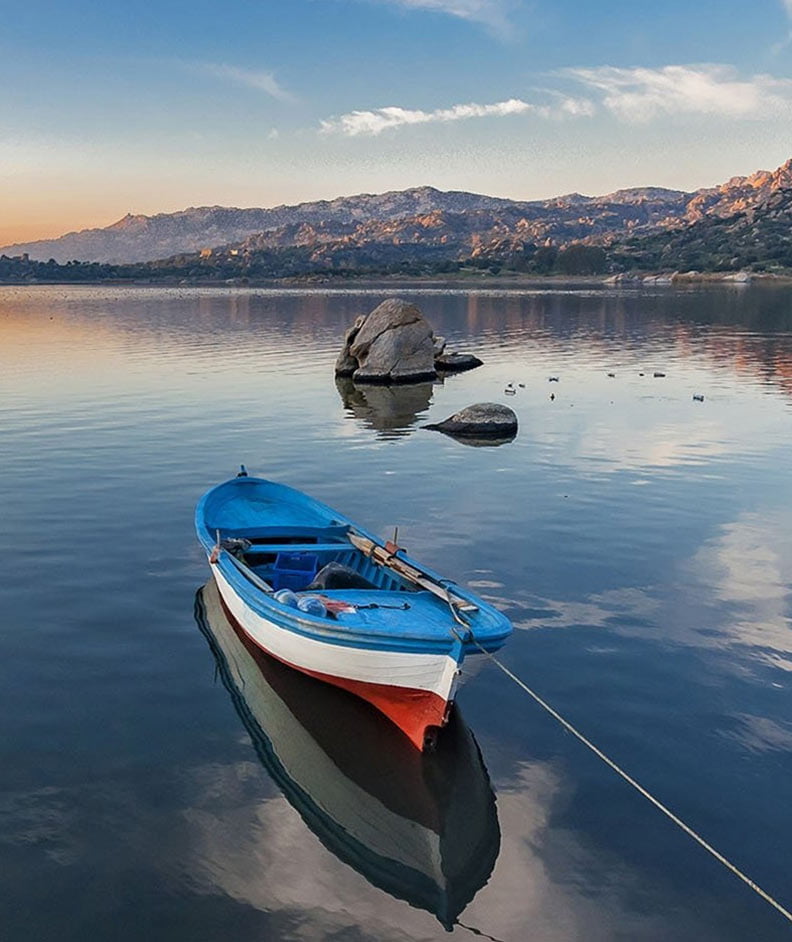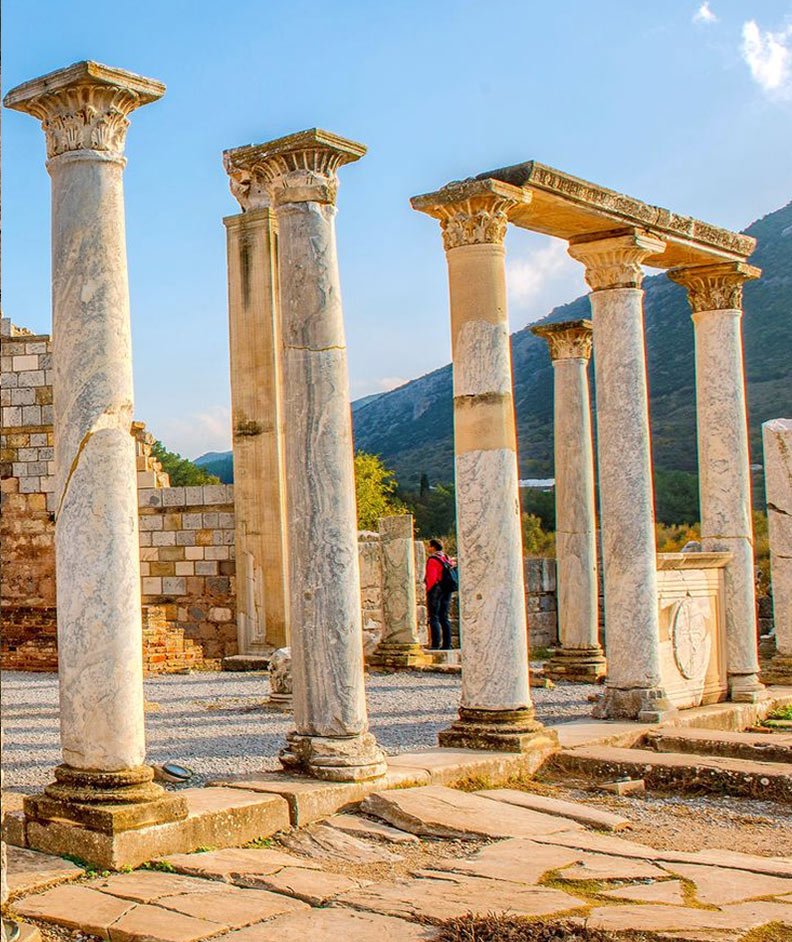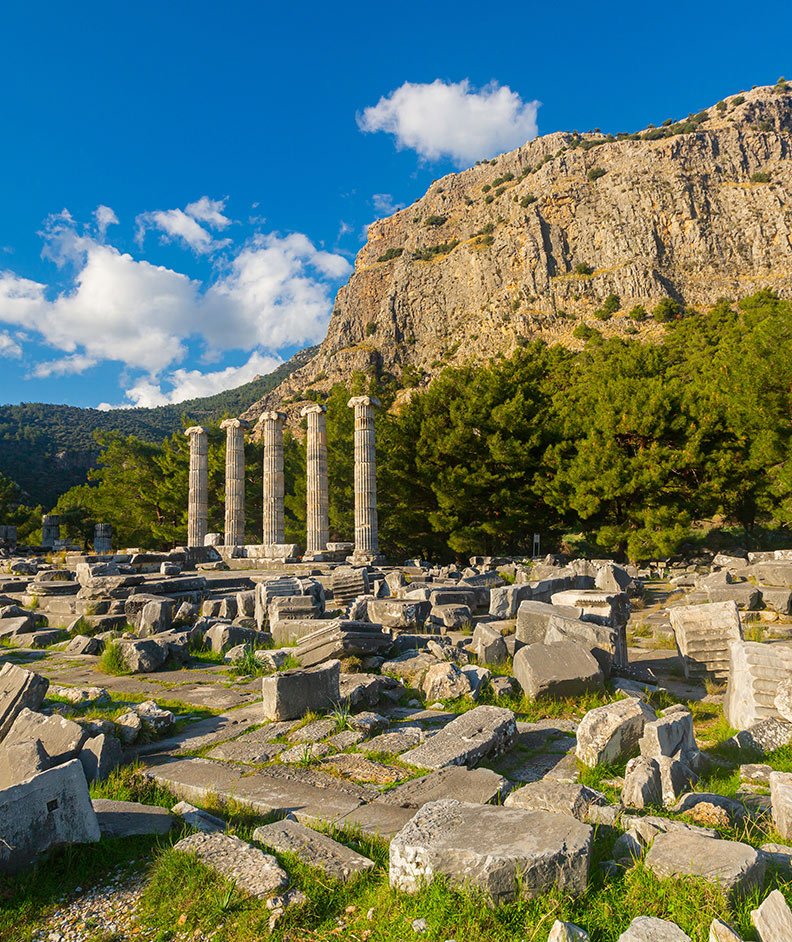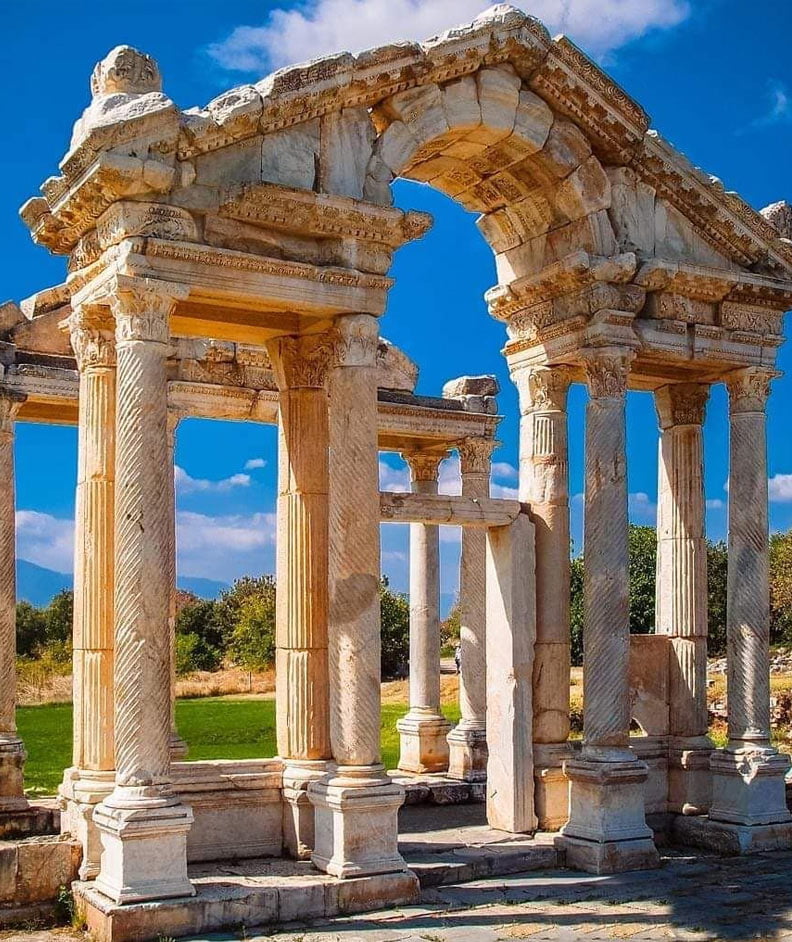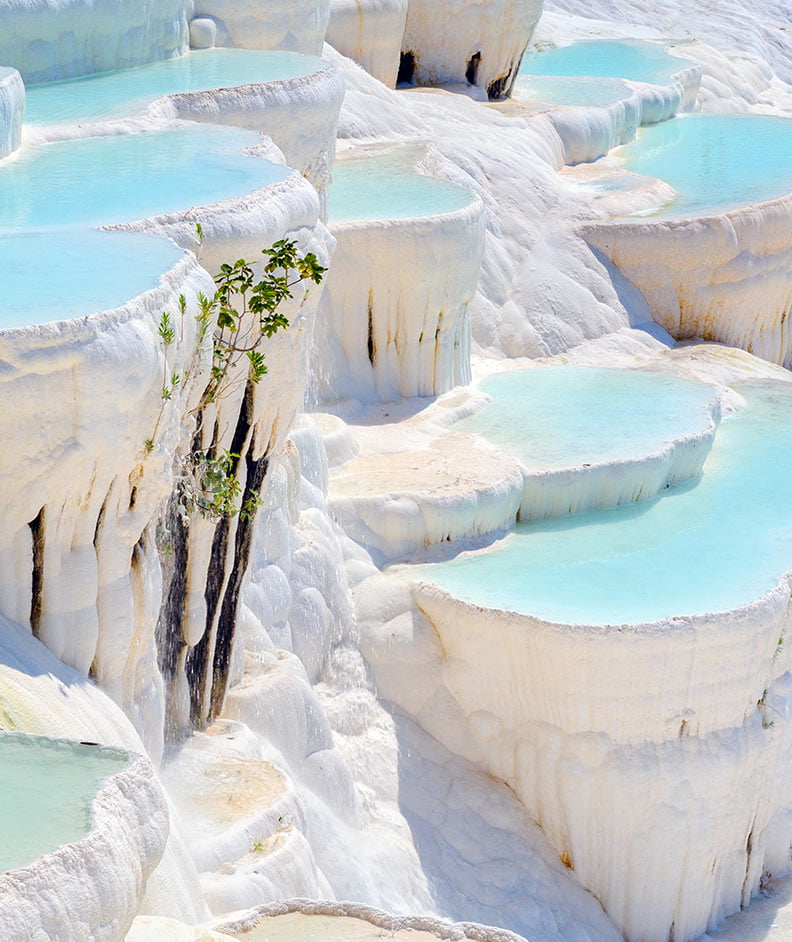EXPERIENCES / EXCURSIONS
Bodrum, “Halicarnassus”, is a lively coastal resort and one of the most popular tourist destinations on the Mediterranean coast of Turkey. With the historical sites, stunning beaches, intense nightlife and quality stays with both modern and authentic hospitality, Bodrum is one of the Turkey’s most popular and cool holiday towns on the Aegean coast.
Bodrum is described as “the Land of the Eternal Blue” by Homeros.
The Castle of St Peter, known as Bodrum Castle located in the center city is one of the main attractions of the peninsula. Castle was built by the Knights Hospitaller during the 15th century, it retains its original design and character of the Knights Period and reflects Gothic architecture, it also contains the Bodrum Museum of Underwater archaeology.
Birdcage 33 – Bodrum City Center : 18 km
– Pedesa Hiking Tour : Hiking around the ruins of the ancient Leleg City of Pedasa along paths that have been trod for centuries to witness the hidden history amongst forest.
– Bodrum City Tour : Hidden cobbled streets and beautiful historical stone houses of the old city with remnants of ancient Halikarnasos on a stroll. This tour may be combined with Bodrum Castle and Museum of Underwater archaeology.
– Mountain Bycing Tour :
– Heraklia & Latmos Hiking Tour : Hiking in the shadows of Latmos mountains by Lake Bafa, following ancient people’s trails of ten thousand years.
The ancient city of Alinda is located twenty kilometers west of Çine, Aydin. It is one of the important Carian cities. Alexander the Great discovered in 334 BCE that a conflict existed between Prince Pixodarus and Princess Ada, both of whom sought to rule. He sided with Princess Ada when she surrendered Alinda, a mountain fortress above fertile plains in Caria. In return, Alexander recognized her as satrap of Caria and freed her from finishing siege operations at Halicarnassus.Further up the mountain is a largely intact theater, which dates back to the early second century BCE. It could offer accommodation to some five thousand people and was renewed during the reign of emperor Augustus. There were thirty-five rows of seats. Beyond it is an acropolis with Hellenistic walls and a superb tower that may have been connected to the theater by a tunnel.In a valley to the west, there is still visible evidence of an impressive Roman aqueduct.
‘Alinda tour includes hiking experience.’
Birdcage 33 – Alinda : 120 km
Bafa Lake against the backdrop of the rugged Latmos Mountains is one of the worth to experience spots takes place within the borders of Söke district of Aydın Province in Aegean. The region has seen human settlement for millennia, as evidenced by over one hundred prehistoric rock paintings discovered in the area since 1994. Pair this with the ruins of Byzantine castles on the lake’s shore and islands, rock-cut shrines and frescoes, ancient monasteries and an almost absurdly picturesque rural village and its friendly hosts,.
Bafa Lake and the extraordinarily craggy Latmos Mountain range rising steeply from its northern shore are unforgettable examples of the deepest rural Turkey surviving within an hour’s drive from Bodrum
Boat trips are a wonderful way to explore the rich wildlife and historic ruins sprinkling the shores and islands of the lake. Ornithologists can observe a plethora of different bird species native to the lake, including pelicans, grebes, egrets, herons, storks, flamingos, hawks and partridges. Botanists can identify up to twenty endemic orchid varieties on the slopes of the Latmos Mountains. Rock climbers can challenge themselves on an abundance of colossal boulders that enliven the hilly landscape.
Birdcage – Bafa Lake : 98 km
Stratonikeia is located in the borders of the village of Eskihisar, 7km west of the district of Yatağan in the province of Muğla. It lies on Kadıkule Hill in the west of the fertile Yatağan Plain at the crossroads of main routes that connect western, central and southern Anatolia with each other. Stratonikeia, inhabited continuously from the Late Bronze Age to the present day, is one of the most important city states in inner Caria. City which hosted many civilizations from antiquity to modern times, is one of the significant archaeological sites in Asia Minor and has unique characteristics. The city developed during the Classic, Hellenistic and Roman Imperial periods and gradually became a center of trade, art and culture, was not only important in antiquity but also in Seljuk and Ottoman Periods.
Birdcage 33 – Stratonikeia : 75 km
Establishment of the antique city of Ephesus located in Selçuk-Izmir dates back to the Neolithic Era, 6000 BC. Recent studies and archeological excavations revealed ancient layouts from the Bronze Era and Hittite Empire in mounds (prehistorical hill layouts) around Ephesus and on the Ayasuluk Hill, where the castle is. The city was known with the name Apasas in the Hittite Era. The harbour city Ephesus inhabited by immigrants from Greece in 1050 BC was moved to the area around the Temple of Artemis in 560 BC. Ephesus visited today was established around 300 BC by Lysimakhos, one of the Generals of Alexander the Great. Ephesus experienced its most glorious times in the Hellenistic and Roman Era as the capital of the Province of Asia and the biggest harbour city with a population of 200,000 citizens. Ephesus was relocated again in the Byzantine Empire and was moved to Ayasuluk Hill in Selçuk where it was initially built. Beginning from the 16th century, Ayasuluk, centrum of Aydınoğulları taken over by Turks in 1330, gradually declined. Following the founding of our Republic in 1923, the city was named Selçuk and developed into a touristic city with 30,000 inhabitants.
Ephesus Museum
Objects and artifacts exhibited in the museum are from the Mycenaean, Hellenistic, Roman, Byzantine and Turkish Era found at the excavations in the Ephesus Ruins, St. John Church, and Belevi Mausoleum. It is the second biggest museum after the Topkapı Museum. Currently 8352 archeological objects, 1092 ethnographical objects and 17143 coins, a total of 26587 objects are exhibited at the Ephesus Museum.
Birdcage 33 – Ephesus : 175 km
Virgin Mary’s House is located on the Bülbül Mountain, 9 km from Selçuk. It is known that John brought Virgin Mary to Ephesus 4 or 6 years after the death of Jesus and she spent her last days at this house. In the 19th century Catherine Emmerich, a German nun who had never been to Ephesus before gave astonishingly detailed descriptions of the House of Virgin Mary. Excavations based on these descriptions revealed a 4th century building with groundwork anticipated to date back to the 1st century. The house is considered sacred by Muslims, Pope VI. After Paul’s visit in 1967, the rites are held on the 15th day of August every year, and these rituals attract great attention.
Bodrum – Virgin Mary 180 km
Priene, located just beside the Güllübahçe village after Söke on the Izmir-Bodrum road is an Ionian city providing the best view to the Hippodamos grid plan. Archeological findings indicate that Priene was established by Carians. The most ancient buildings revealed at excavations date back to 6th century BC
Birdcage 33 – Priene 135 km
Miletus, the most ancient and most important layout of Ionia was a costal city with four harbours. Agora, Stadium, Faustina Bath, İlyas Bey Mosque and the Theater with a capacity of 15000 spectators are places worth of visiting.
Birdcage 33 – Miletus 110 km
Didyma (Didim) within the borders of Yeni Hisar village in Söke-Aydın is famous for its Apollon Temple.
First excavations in Didyma were performed in 1858 by English teams under the leadership of Newton. Excavations started in 1905 under the leadership of Th. Weigand continued until 1937.
The major part of the temple could be revealed by that time. German experts still continue with the excavations.
Didyma is known as the residence and sanctuary of a prophet of Miletus. Recent excavations revealed that Didyma is not only the residence of a prophet, but also a crowded layout. The construction of the archaic temple is believed to be started in the 6th century BC and finished by the end of the same century.
Birdcage 33 – Didyma 120 km
Aphrodisias is the most famous antique city occupying an area about 520 hectare in the outskirts of Babadağ in the Menderes valley in Caria region, today’s Geyre village in Aydın-Karacasu. So far none of the Greco-Roman cities known or still under excavation yielded the artistic abundance and antique work diversity provided by Aphrodisias. Many of the sculptures, relieves, and pedestals in Italy, Greece and other places bear the signature of artists from Aphrodisias. Aphrosidisias is proven to be not only a place where some models were copied, but a centrum for authentic sculpture work.
Monograms of Emperor Justinian and his wife Empress Theodora are still visible on the capitals of this grandiose church built on two stores. St. John’s grave was located under the main dome. Christians believing in the curing power of the dust of the Saint’s grave turned this place into a venue of pilgrimage.
Birdcage 33 – Aphrodisias 185 km
For the ample amount of temples and other religious buildings, the antique city of Hierapolis, located 18 km north of Denizli, is known as the Holy City in the archeological literature. Thermal waters of Pamukkale containing aluminum and sulphate form the white layers and travertines, and are also important for health and well-being. Antique sources indicate that the Roman Emperor Hadiranu had visited Hierapolis in 129, Caracalla in 215 and Valens in 370 hoping to find cure for their health problems. In ancient times, patients were treated for coronary diseases, hypertension, and arteriosclerosis with this water just like Pergamon treated his insane patients with inspiration in Asclepion.
Birdcage 33 – Pamukkale 260 km
